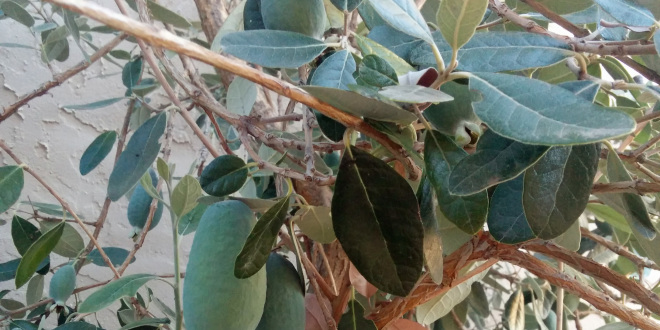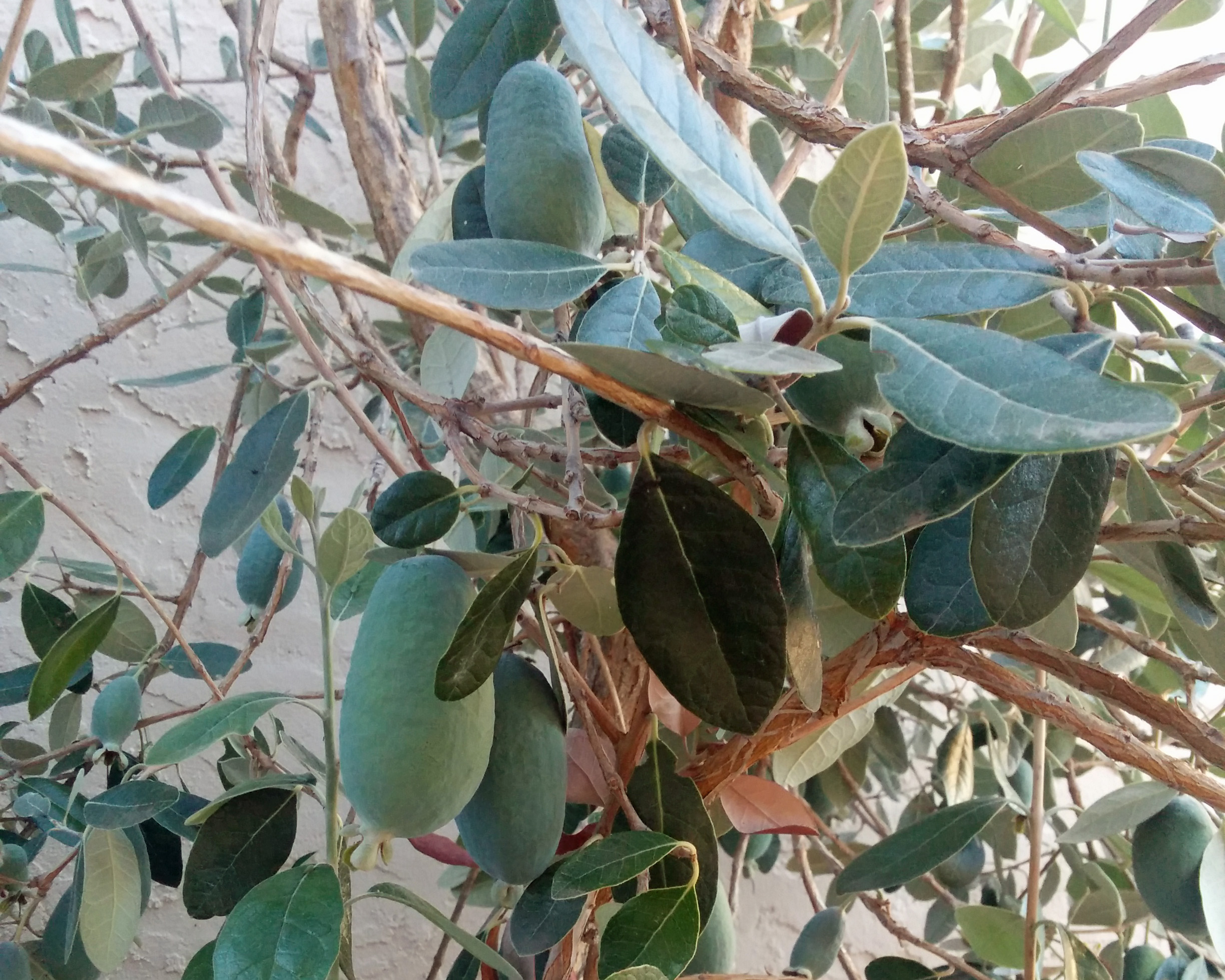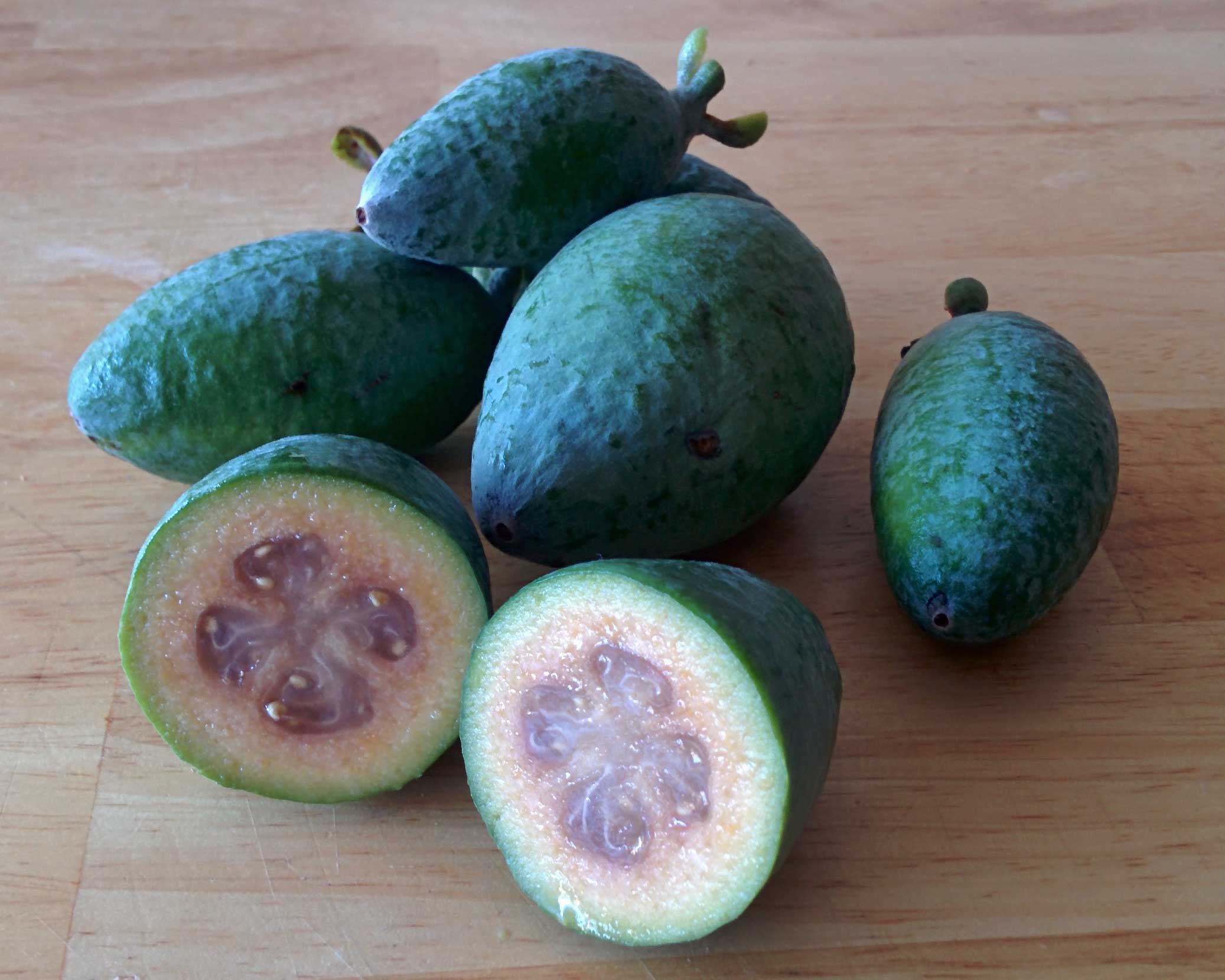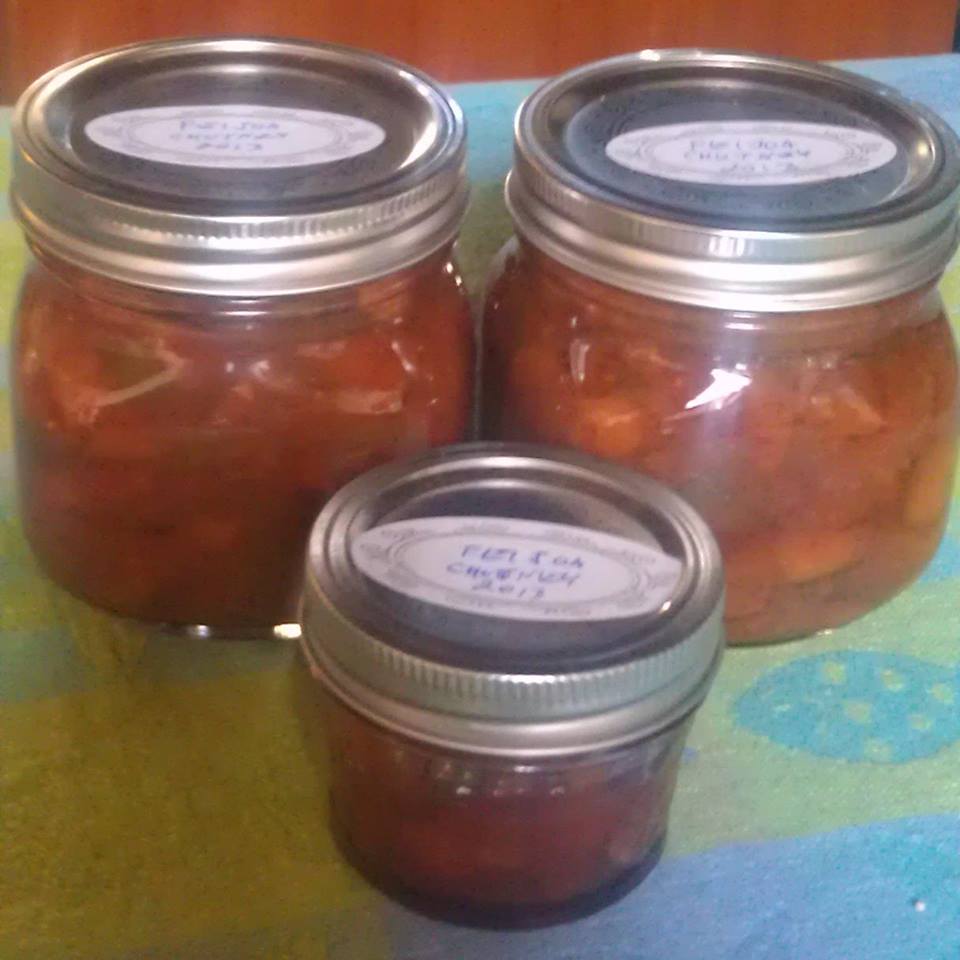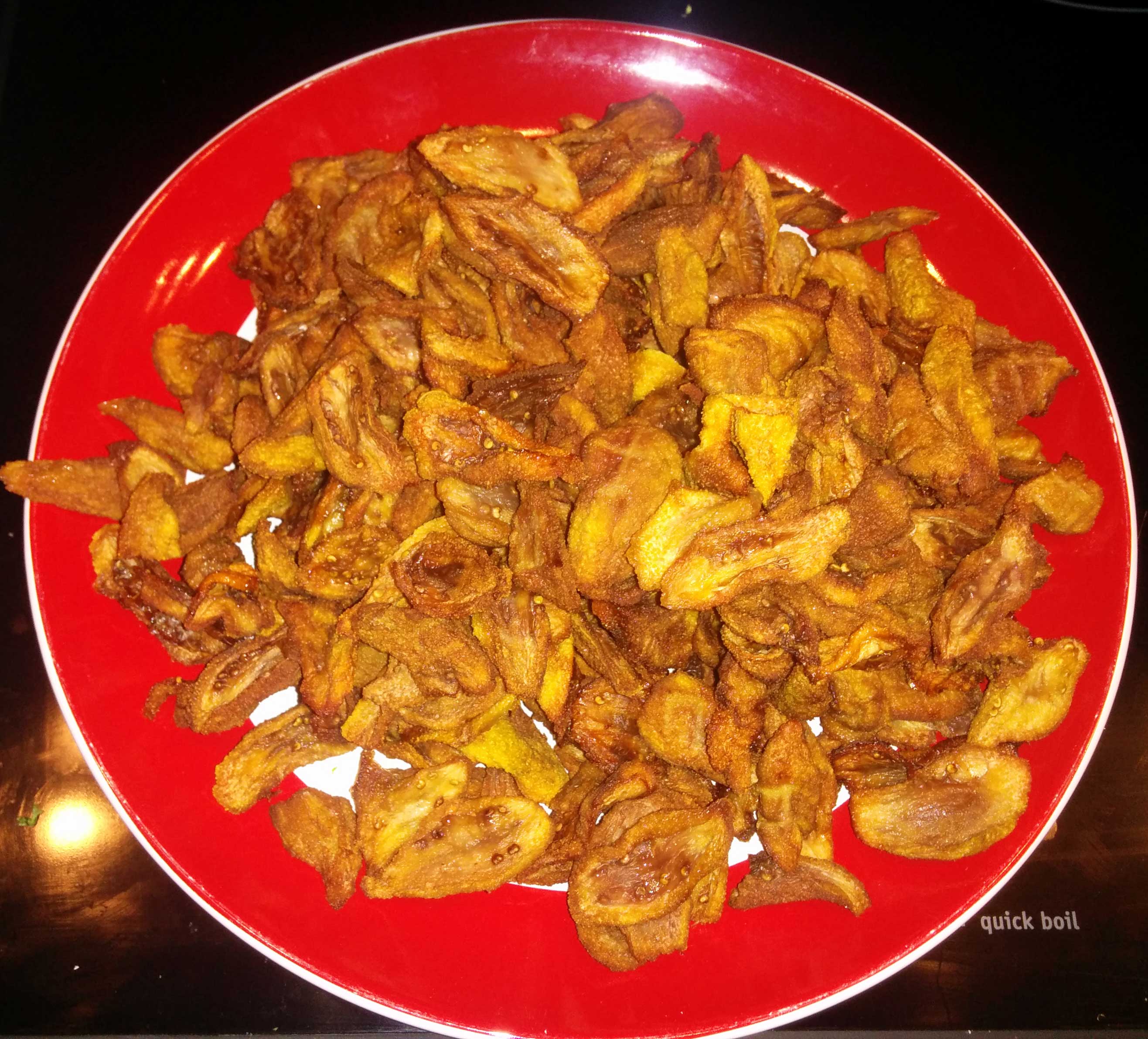Feijoa, pineapple guava or guavasteen, is a evergreen, small tree known for its spectacular red fleshy flowers in May and its small, tasty, green-skinned fruit in October and November. This plant is attractive to bees, butterflies and/or birds. The flower-petals are edible and have a cinnamon flavor. Birds, such as Blue Jays and Mockingbirds, find them very tasty.
Bloom Time: Late Spring/Early Summer
Acca sellowiana is native to the highlands of southern Brazil, eastern Paraguay, Uruguay, northern Argentina, and Columbia. It is widely cultivated as a garden plant and fruiting tree in New Zealand and can be found as a garden plant elsewhere such as in Australia, Azerbaijan, western Georgia, and southern russia. The German botanist Otto Karl Berg named feijoa after Joao da Silva Feijo, a Portuguese botanist born in the colony of Brazil.
Details
Genus: Acca (AK-uh) (Info)
Species: sellowiana (sel-lo-wee-AH-nuh) (Info)
Cultivar: Coolidge
Synonym:Feijoa sellowiana
Synonym:Orthostemon sellowianus
Category: Edible Fruits and Nuts, Shrubs
Height: over 8 feet; can be pruned as shrub
Spacing: Unknown – Tell us
Foliage: Gray
Hardiness:
USDA Zone 8a: to -12.2 °C (10 °F)
USDA Zone 8b: to -9.4 °C (15 °F)
USDA Zone 9a: to -6.6 °C (20 °F)
USDA Zone 9b: to -3.8 °C (25 °F)
USDA Zone 10a: to -1.1 °C (30 °F)
USDA Zone 10b: to 1.7 °C (35 °F)
Sun Exposure: Full Sun
Danger: Unknown – Tell us
Other details: This plant is attractive to bees, butterflies and/or birds
Average Water Needs; Water regularly; do not overwater
Soil pH requirements: Unknown – Tell us
Patent Information: Unknown – Tell us
Propagation Methods: Unknown – Tell us
Seed Collecting: Unknown – Tell us
